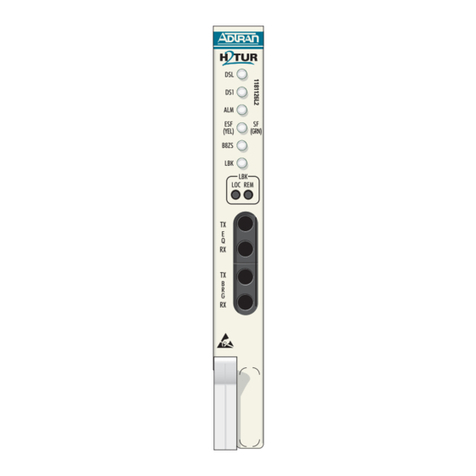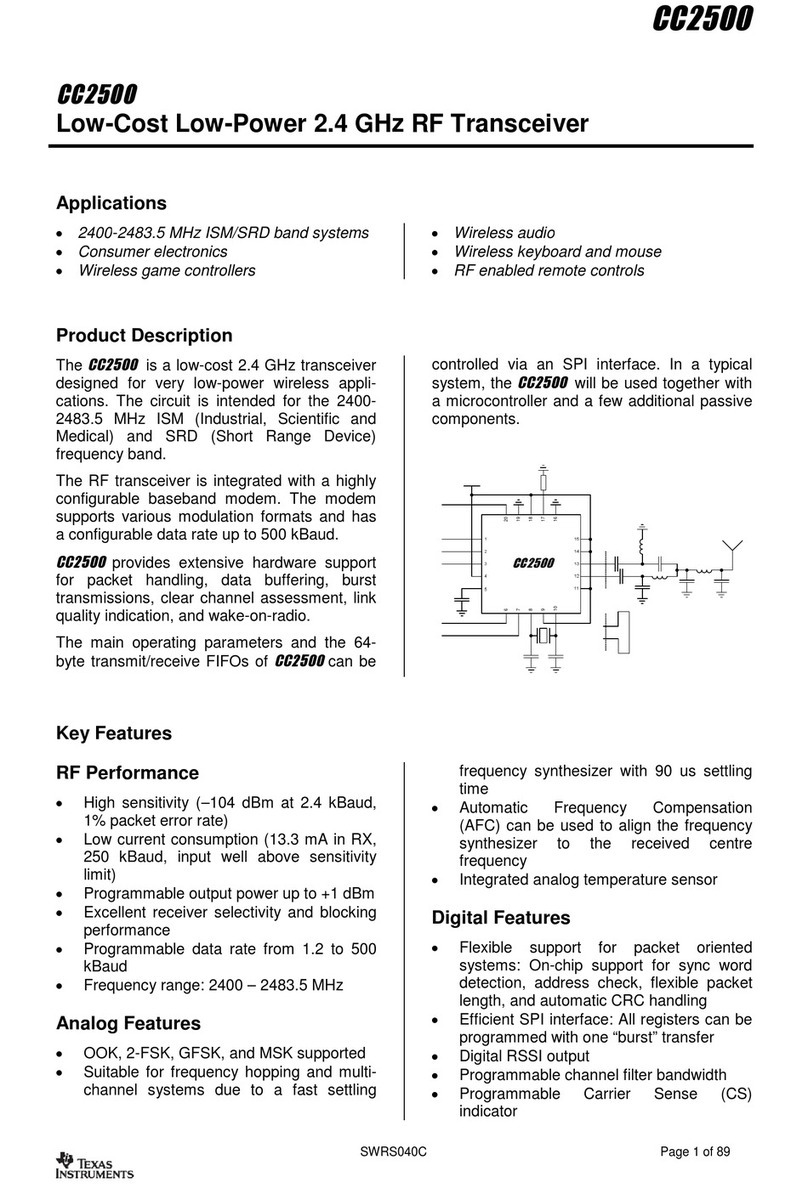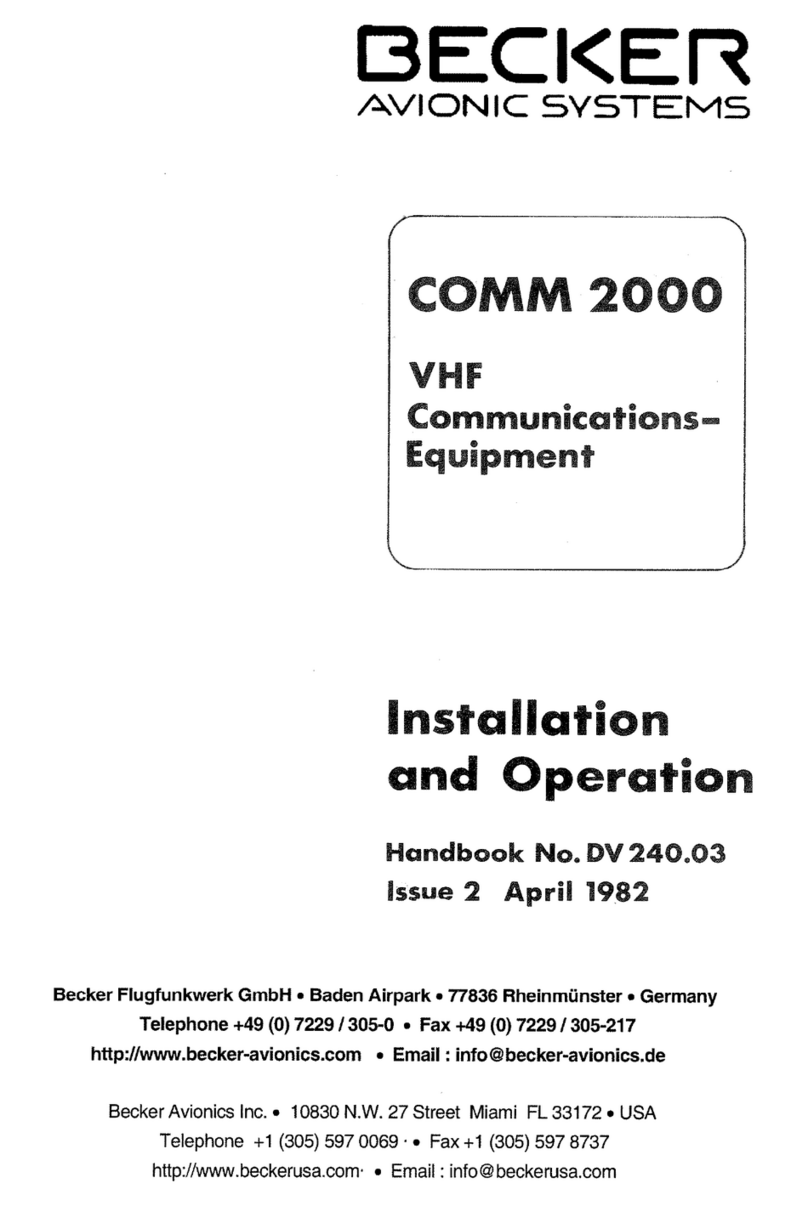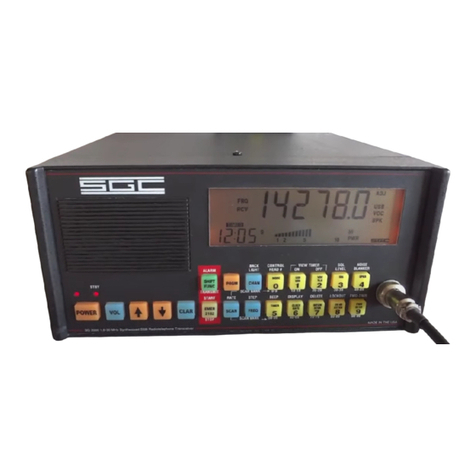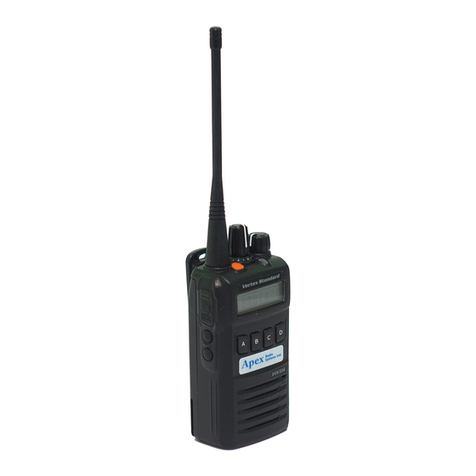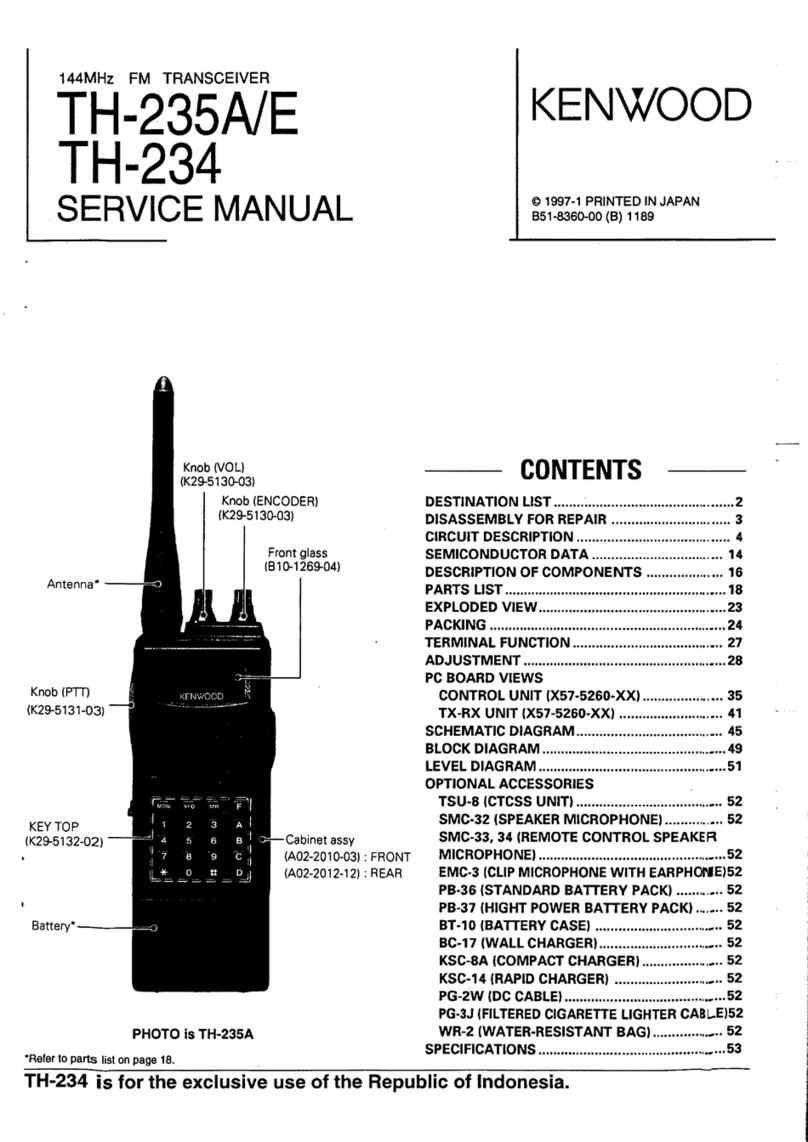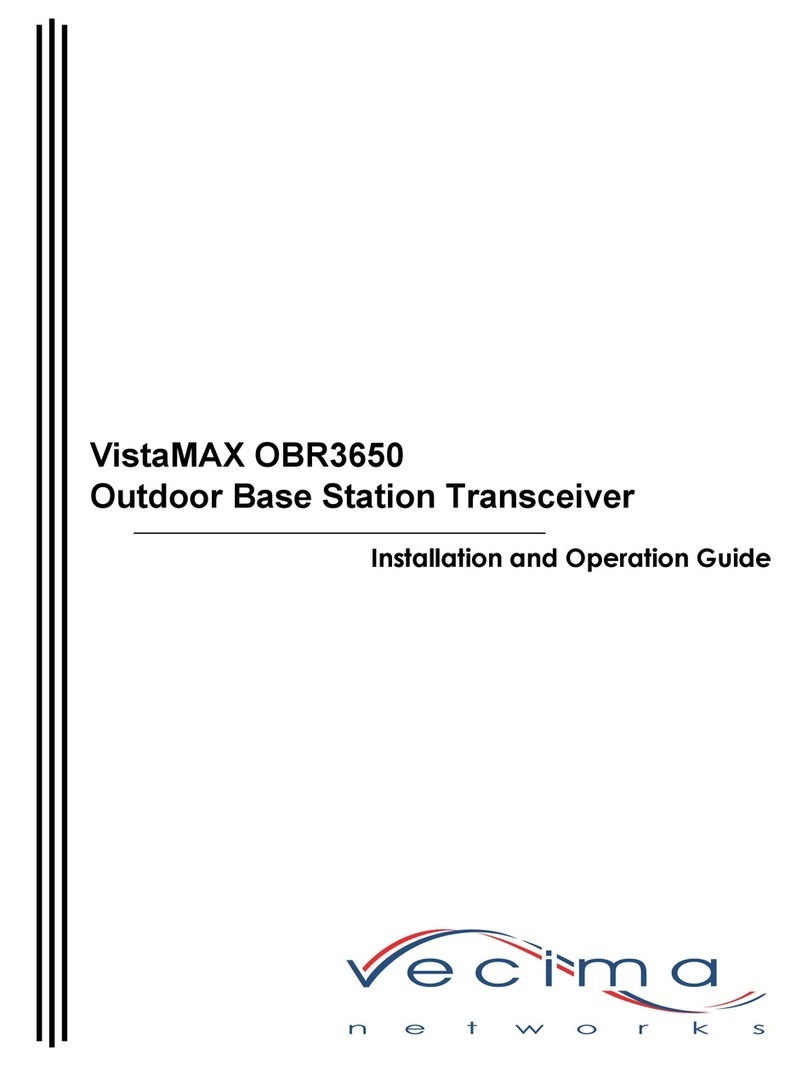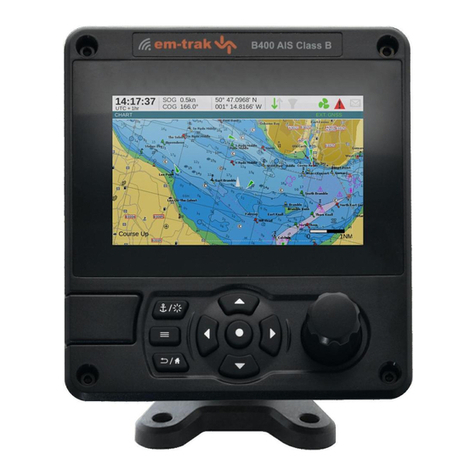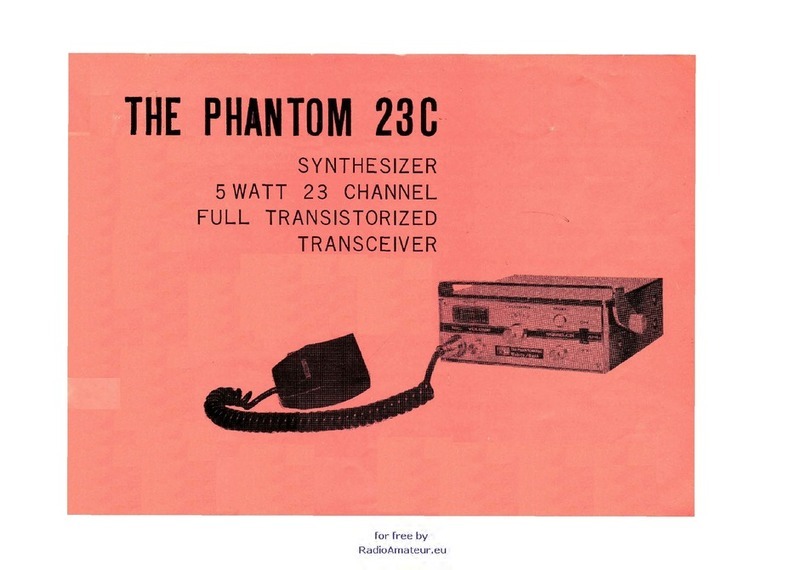E.F. Johnson Company 98xx LOW TIER User manual

98xx LOW TIER
LTR®/CONVENTIONAL
OPERATING MANUAL
Part No. 002-9801-201 November 1999


LAND MOBILE PRODUCT WARRANTY - The manufacturer’s
warranty statement for this product is available from your product
supplier or from the E.F. Johnson Company, 299 Johnson Avenue, Box
1249, Waseca, MN 56093-0514. Phone (507) 835-6222.
Copyright© 1999 by the E.F. Johnson Company
The E.F. Johnson Company, which was founded in 1923, designs, manu-
factures, and markets radio communication products, systems, and
services worldwide. E.F. Johnson produces equipment for land mobile
radio and mobiletelephone services which include business, industrial,
government, public safety, and personal users.
Viking Head/EFJohnson logo, LTR®, and Call Guard® are registered
trademarks of the E.F. Johnson Company. All other company and/or
product names used in this manual are trademarks and/or registered trade-
marks of their respective manufacturer.

SAFETY INFORMATION
4
SAFETY INFORMATION
The FCC has adopted a safety standard for human exposure to RF en-
ergy. Proper operation of this radio under normal conditions results in
user exposure to RF energy below the Occupational Safety and Health
Act and Federal Communication Commission limits.
WARNING
DO NOT allow the antenna to touch or come in very close proximity
with the eyes, face, or any exposed body parts while the radio is trans-
mitting.
DO NOT operate the transmitter of a mobile radio when a person out-
side the vehicle is within one (1) meter of the antenna.
DO NOT operate the transmitter of a stationary radio (base station or
marine radio) when a person is within one (1) meter of the antenna.
DO NOT operate the radio in explosive or flammable atmospheres.
The transmitted radio energy could trigger blasting caps or cause an
explosion.
DO NOT operate the radio without the proper antenna installed.
DO NOT allow children to operate or play with this radio.
NOTE: The above warning list is not intended to include all hazards
that may be encountered when using this radio.
This device complies with Part 15 of the FCC rules. Operation is sub-
ject to the condition that this device does not cause harmful interfer-
ence. In addition, changes or modifications to this equipment not
expressly approved by the E.F. Johnson Company could void the user’s
authority to operate this equipment (FCC rules, 47CFR Part 15.19).

SAFETY INFORMATION
5
FCC EXPOSURE LIMITS
This mobile radio transceiver was tested by the manufacturer with
an appropriate antenna in order to verify compliance with Maximum Per-
missible Exposure (MPE) limits set under Section 2.1091 of the FCC
Rules and Regulations. The guidelines used in the evaluation are derived
from Table 1 (B) titled “Limits For General Population/Uncontrolled
Exposure” which is from FCC report OET bulletin #65.
Table 1
FCC Limits for Maximum Permissible Exposure (MPE)
(A) Limits For Occupational/Controlled Exposure
Frequency Range
(MHz)
Electric Field
Strength (E)
(V/m)
MagneticField
Strength (H)
(A/m)
PowerDensity
(S)
(mW/cm22)
Averaging
Time |E|2, |H|2,
S (minutes)
0.3-3.0 614 1.63 (100)* 6
3.0-30 1842/f 4.89/f (900/f2)* 6
30-300 61.4 0.163 1.0 6
300-1500 -- -- f/300 6
1500-100,000 -- -- 5 6
(B) Limits For General Population/Uncontrolled Exposure
Frequency Range
(MHz)
Electric Field
Strength (E)
(V/m)
MagneticField
Strength (H)
(A/m)
PowerDensity
(S)
(mW/cm22)
Averaging
Time |E|2, |H|2,
S (minutes)
0.3-1.34 614 1.63 (100)* 30
1.34-30 824/f 2.19/f (180/f2)* 30
30-300 27.5 0.073 0.2 30
300-1500 -- -- f/1500 30
1500-100,000 -- -- 1.0 30
f = Frequency in MHz *Plane-wave equivalent power density

SAFETY INFORMATION
6
Table 2 lists the antenna whips and bases recommended for use in
each frequency range. Each model of this radio was tested with the appro-
priate antenna listed. The antenna was mounted in the center of the roof
of a domestically manufactured 4-door passenger sedan. The radio manu-
facturer has determined that the user and service personnel should remain
one (1) meter in distance away from the antenna when transmitting. By
maintaining this distance, these individuals are not exposed to radio fre-
quency energy or magnetic fields in excess of the guidelines set forth in
Table 1.
NOTE: If the installer or user changes the type or location of the
antenna, they should be aware of the MPE guidelines shown in
Table 1 and take measures to comply with those guidelines.
Table 2
Recommended Antenna Whips and Bases
(Antenna Manufacturer - Antenna Specialists)
Frequency Whip Model No. Base Model No.
136-144 MHz ASPJ1415 KM220
144-152 MHz ASPA1415 KM220
152-162 MHz ASPB1415 KM220
162-174 MHz ASPC1415 KM220
400-430 MHz ASPE1615 KM220
430-470 MHz ASPD1615 KM220
470--512 MHz ASPF1615 KM220
806-869 MHz ASPA1855 KM220
890-960 MHz ASPG1865 KM220

TABLE OF CONTENTS
7
TABLE OF CONTENTS
SAFETY INFORMATION . . . . . . . . . . . . . . . . . . . . . . . . . . . . . . . . . . 4
QUICK REFERENCE GUIDE. . . . . . . . . . . . . . . . . . . . . . . . . . . . . . .9
FEATURES . . . . . . . . . . . . . . . . . . . . . . . . . . . . . . . . . . . . . . . . . . . . .10
CONTROLS AND DISPLAY. . . . . . . . . . . . . . . . . . . . . . . . . . . . . . .11
Front Panel Controls. . . . . . . . . . . . . . . . . . . . . . . . . . . . . . . . . . . . . 11
Rear Panel Jacks and Connectors. . . . . . . . . . . . . . . . . . . . . . . . . . .12
Front Panel Display . . . . . . . . . . . . . . . . . . . . . . . . . . . . . . . . . . . . .13
GENERAL OPERATION. . . . . . . . . . . . . . . . . . . . . . . . . . . . . . . . . .14
Power-Up Sequence . . . . . . . . . . . . . . . . . . . . . . . . . . . . . . . . . . . . . 14
Determining Volume Level . . . . . . . . . . . . . . . . . . . . . . . . . . . . . . . 14
Channel Select and Display . . . . . . . . . . . . . . . . . . . . . . . . . . . . . . . 14
Setting Squelch Level. . . . . . . . . . . . . . . . . . . . . . . . . . . . . . . . . . . .14
STANDARD CALLS. . . . . . . . . . . . . . . . . . . . . . . . . . . . . . . . . . . . . . 15
Introduction . . . . . . . . . . . . . . . . . . . . . . . . . . . . . . . . . . . . . . . . . . .15
Placing a Standard Call . . . . . . . . . . . . . . . . . . . . . . . . . . . . . . . . . .16
Receiving a Standard Call . . . . . . . . . . . . . . . . . . . . . . . . . . . . . . . .17
TELEPHONE CALLS. . . . . . . . . . . . . . . . . . . . . . . . . . . . . . . . . . . . . 17
Introduction . . . . . . . . . . . . . . . . . . . . . . . . . . . . . . . . . . . . . . . . . . .17
Placing a Telephone Call . . . . . . . . . . . . . . . . . . . . . . . . . . . . . . . . .18
Receiving a Telephone Call . . . . . . . . . . . . . . . . . . . . . . . . . . . . . . .19
Landside-Originate Telephone Call . . . . . . . . . . . . . . . . . . . . . . . . .19
GENERAL FEATURES. . . . . . . . . . . . . . . . . . . . . . . . . . . . . . . . . . . 20
AUX1 and AUX2 Switches . . . . . . . . . . . . . . . . . . . . . . . . . . . . . . .20
Call Indicator . . . . . . . . . . . . . . . . . . . . . . . . . . . . . . . . . . . . . . . . . . 21
Encryption . . . . . . . . . . . . . . . . . . . . . . . . . . . . . . . . . . . . . . . . . . . .21
Home Channel Select. . . . . . . . . . . . . . . . . . . . . . . . . . . . . . . . . . . .22
Horn Alert. . . . . . . . . . . . . . . . . . . . . . . . . . . . . . . . . . . . . . . . . . . . .22
Option Select . . . . . . . . . . . . . . . . . . . . . . . . . . . . . . . . . . . . . . . . . . 23
Power Turn-Off Delay . . . . . . . . . . . . . . . . . . . . . . . . . . . . . . . . . . . 23
Proceed (Clear-To-Talk) Tone. . . . . . . . . . . . . . . . . . . . . . . . . . . . .24
Receive-Only Channels . . . . . . . . . . . . . . . . . . . . . . . . . . . . . . . . . . 24
Time-Out Timer . . . . . . . . . . . . . . . . . . . . . . . . . . . . . . . . . . . . . . . .25
Tone Select. . . . . . . . . . . . . . . . . . . . . . . . . . . . . . . . . . . . . . . . . . . .25
CHANNEL SCAN . . . . . . . . . . . . . . . . . . . . . . . . . . . . . . . . . . . . . . . .25
Introduction . . . . . . . . . . . . . . . . . . . . . . . . . . . . . . . . . . . . . . . . . . .25
Scan List Programming . . . . . . . . . . . . . . . . . . . . . . . . . . . . . . . . . .26

TABLE OF CONTENTS
8
Scan Delay and Continue Timers. . . . . . . . . . . . . . . . . . . . . . . . . . . 27
Transmitting In The Scan Mode. . . . . . . . . . . . . . . . . . . . . . . . . . . . 27
Fixed Transmit While Scanning. . . . . . . . . . . . . . . . . . . . . . . . . . . .28
LTR AND CONVENTIONAL OPERATING MODES . . . . . . . . . .29
General . . . . . . . . . . . . . . . . . . . . . . . . . . . . . . . . . . . . . . . . . . . . . . . 29
LTR Operation . . . . . . . . . . . . . . . . . . . . . . . . . . . . . . . . . . . . . . . . .29
Conventional Operation . . . . . . . . . . . . . . . . . . . . . . . . . . . . . . . . . .29
Monitoring Conventional Channels Before Transmitting . . . . . . . .30
LTR FEATURES. . . . . . . . . . . . . . . . . . . . . . . . . . . . . . . . . . . . . . . . . 30
Transmit Inhibit . . . . . . . . . . . . . . . . . . . . . . . . . . . . . . . . . . . . . . . .30
Busy Queuing. . . . . . . . . . . . . . . . . . . . . . . . . . . . . . . . . . . . . . . . . . 31
System Search . . . . . . . . . . . . . . . . . . . . . . . . . . . . . . . . . . . . . . . . .31
Transpond. . . . . . . . . . . . . . . . . . . . . . . . . . . . . . . . . . . . . . . . . . . . . 32
Priority and Block ID Codes . . . . . . . . . . . . . . . . . . . . . . . . . . . . . . 32
CONVENTIONAL FEATURES. . . . . . . . . . . . . . . . . . . . . . . . . . . . . 33
Monitor Mode. . . . . . . . . . . . . . . . . . . . . . . . . . . . . . . . . . . . . . . . . .33
Transmit Disable On Busy . . . . . . . . . . . . . . . . . . . . . . . . . . . . . . . .33
Talk-Around . . . . . . . . . . . . . . . . . . . . . . . . . . . . . . . . . . . . . . . . . . . 34
Call Guard Squelch. . . . . . . . . . . . . . . . . . . . . . . . . . . . . . . . . . . . . . 34
Priority Channel Sampling . . . . . . . . . . . . . . . . . . . . . . . . . . . . . . . .34
MISCELLANEOUS. . . . . . . . . . . . . . . . . . . . . . . . . . . . . . . . . . . . . . .35
Supervisory Tones . . . . . . . . . . . . . . . . . . . . . . . . . . . . . . . . . . . . . .35
LTR Telephone Call Tones . . . . . . . . . . . . . . . . . . . . . . . . . . . . . . .37
Dealer Programming . . . . . . . . . . . . . . . . . . . . . . . . . . . . . . . . . . . . 37
Speaking Into Microphone . . . . . . . . . . . . . . . . . . . . . . . . . . . . . . . .38
Operation At Extended Range . . . . . . . . . . . . . . . . . . . . . . . . . . . . .38
Preventing Battery Discharge. . . . . . . . . . . . . . . . . . . . . . . . . . . . . .38
Licensing . . . . . . . . . . . . . . . . . . . . . . . . . . . . . . . . . . . . . . . . . . . . . 39
Transceiver Service . . . . . . . . . . . . . . . . . . . . . . . . . . . . . . . . . . . . .39

QUICK REFERENCE GUIDE
9
QUICK REFERENCE GUIDE
Power On/Off - Press the PWR switch.
Set Volume Level - Press VOL up/down switches.
Change Channel - Press the CHL up/down switches.
Scan On/Off - Press SCAN switch. Scan on = Green LED on,
Scanning occurring = “+” displayed (see page 25).
Program Channel Scan List - Select desired channel and then press the
A/D switch. The displayed channel is not in the scan list when “–” is
displayed (see page 26).
Turn Call Indicator Off - Press any button or cycle power.
Monitor Before Transmitting (Conventional Only) - Take microphone
off-hook to enable monitor mode (or press AUX1/AUX2 if
programmed for monitor). The channel is busy if someone is talking
(see page 30).
The AUX1 and AUX2 switches can each be programmed to control
one of the following. The “on” indicator for each switch is shown in the
above illustration.
Transmit (Red)
Call (Yellow)
Scan (Green)
Scan List Status
Scan Occurring Channel No.
Aux1
Aux2
•Squelch adj. (conv. only) -
Press switch and then CHL
up/down switches
•Horn alert
•Monitor
•Home channel select
•Priority sampling (conv. only)
•Encryption (optional)
•Talk-around select
•Option select

FEATURES
10
FEATURES
General Features
•Up to 16 channels (system/groups) selectable
•LTR® and conventional operation
•Channel scan
•User programmable channel scan list
•Proceed (clear-to-talk) tone
•Call indicator
•Time-out timer
•Horn alert available
•Two programmable option switches (AUX1, AUX2)
•Receive-only channels
•Companding (optional)
•Encryption (optional)
LTR Features
•Busy queuing (telephone calls only)
•System search (telephone calls only)
•Transpond
•Transmit inhibit
•Receive priority calls
Conventional Features
•User-adjustable squelch level
•Call Guard squelch control
•Talk-around
•First and second priority channel sampling
•Transmit disable on busy
•Monitor mode
•Repeater talk-around
NOTE: Some of the preceding features are available only if they have
been programmed by your dealer.

CONTROLS AND DISPLAY
11
CONTROLS AND DISPLAY
Front Panel Controls
Power Switch - Pressing this switch turns power on and off. The vehicle
ignition switch may also control power (see “Power Turn-Off Delay” on
page 23).
VOL Up/Down - Pressing the upper part of the switch increases the
volume by one step, and pressing the lower part decreases it by one step.
Holding the switch down causes the function to repeat.
CHL Up/Down - Pressing the upper part of the switch increases the
selected channel by one, and pressing the lower part decreases the channel
by one. Holding the switch down causes the function to repeat.
SCAN Switch - Turns scanning on and off (see page 25).
A/D (Add/Delete) Switch - Programs the channel scan list. The
displayed channel is deleted from the scan list and not scanned when “–”
is displayed (see page 26).
AUX1/AUX2 (Auxiliary) Switches -These switches can be programmed
to control various functions. Refer to page 20 for more information.
Option SwitchesPower Switch
Volume Up/Down Channel Up/Down
SpeakerDisplay/Indicators
Microphone
Jack Switch Switch

CONTROLS AND DISPLAY
12
Microphone Jack - Connection point for the microphone.
Microphone Push-To-Talk (PTT) Switch (Not Shown) - Button on the
microphone which keys the transmitter.
Speaker - The internal speaker is located behind the grille. An optional
external speaker can be connected to the speaker jack located on the rear
panel.
Rear Panel Jacks and Connectors
Antenna Jack - Miniature UHF jack for connecting the 50-ohm antenna.
Power Jack - Connection point for the power cable which attaches to the
vehicle battery. A nominal 12-volt DC, negative ground power source is
required.
Speaker Jack - Connection point for an optional 4-ohm, 5-watt external
speaker. The front panel speaker is automatically disabled when a speaker
is connected to this jack.
Accessory Cable (Not Shown) - This optional cable installs in the
external speaker jack opening, and is used for connecting such things as
the ignition switch and horn alert to the transceiver.
Antenna
Jack External Speaker
Jack
Power
Jack

CONTROLS AND DISPLAY
13
Front Panel Display
Channel Number Display - Indicates the selected channel number. Up to
sixteen channels can be selected using the CHL switch (see “Channel
Select and Display” on page 14).
Transmit Indicator (Red) - Indicates that the transmitter is keyed.
Call Indicator (Yellow) - Indicates that a call has been received on a
channel programmed for a call indicator (see page 21). To turn this indi-
cation off, press any key.
Scan Indicator (Green) - Indicates that scanning has been enabled (see
page 25).
""-Indicates that scanning is occurring.
""-Indicates that the displayed channel is not in the scan list (not
scanned).
Upper Decimal Point - Indicates that the function controlled by the
AUX1 key is enabled.
Lower Decimal Point - Indicates that the function controlled by the
AUX2 key is enabled.
Transmit (Red)
Call (Yellow)
Scan (Green)
Scan List Status
Scan Occurring Channel Number
Aux1
Aux2
+
–

GENERAL OPERATION
14
GENERAL OPERATION
Power-Up Sequence
When power is turned on, all segments and indicators in the display
are momentarily enabled, a beep sounds (if tones are enabled), and the
transceiver is ready for service.
Determining Volume Level
The relative volume setting may be determined by enabling a refer-
ence tone using one of the following methods:
•If key press tones are enabled, a short tone sounds when front panel
keys are pressed.
•If a conventional channel is selected, take the microphone off-hook and
if someone is talking, audio is heard. If no one is talking, the squelch
control can be adjusted as described in “Setting Squelch Level” on
page 14 and noise should be heard. When an LTR channel (system) is
selected, the receiver cannot be manually unsquelched.
Channel Select and Display
Channels are selected by pressing the CHL up/down switches. The
channel number displayed is actually one of up to sixteen system/group
combinations that can be programmed. If the selected system/group is
programmed for LTR operation, an encode and decode ID code and other
information are selected, and if it is programmed for conventional opera-
tion, a specific radio channel is selected. Refer to page 29 for more infor-
mation on LTR and conventional operation.
Setting Squelch Level
NOTE: This adjustment sets the squelch level for conventional channels
only. With LTR channels (systems), the squelch level is preset and this
adjustment has no effect.

STANDARD CALLS
15
When conventional channels are programmed, the squelch level can
be set the AUX1 or AUX2 switch programmed to select the squelch
adjust function. If this switch is not programmed, the squelch level is
fixed at a default setting. Proceed as follows:
1. Select a conventional channel that is not busy. Take the microphone
off-hook to enable monitoring.
2. Press the AUX1 or AUX2 switch (whichever is programmed for
squelch adjust) and the appropriate decimal point lights to indicate that
the squelch adjust mode is enabled.
3. Within 8 seconds, press the CHL down switch until noise is heard and
then press the CHL up switch until the noise just mutes.
4. To select the current level and exit this mode, press the AUX1/AUX2
switch again. This also occurs automatically 2 seconds after a change
is made or 8 seconds after no activity.
5. If both narrow band and wideband channels are programmed, perform
this adjustment with each channel type selected because separate
settings are maintained for each.
NOTE: If weak messages are not heard or if unsquelching occurs when
no messages are present, slight readjustment may be required.
STANDARD CALLS
Introduction
Most calls you make will probably be the standard type described in
this section. These calls are between you and another mobile or control
station. The main difference between these calls and telephone calls (the
other type that can be placed) is that no number is dialed using a keypad.
The following procedure applies to both LTR and conventional operation.

STANDARD CALLS
16
Placing a Standard Call
1. Turn transceiver power on and set the volume as described starting on
page 14. With conventional operation, also set the squelch as described
on page 14.
2. Select the channel of the mobile being called as described in “Channel
Select and Display” on page 14.
3. If a conventional call is being placed, monitor the channel manually or
automatically as described on page 30.
4. Press (and hold) the microphone PTT (push-to-talk) switch to talk and
release it to listen. Operation with LTR and conventional channels is as
follows:
LTR Operation
•If the proceed tone is enabled (see page 24), it sounds shortly after
the PTT switch is pressed and it indicates that the radio system was
successfully accessed. If the proceed tone is not enabled, no tone
sounds when the system is successfully accessed. (The proceed and
other tonesmay have been disabled as described in “Tone Select” on
page 25.)
•If the radio system is busy, the busy tone sounds (see page 35). If you
continue to press the PTT switch, the system is accessed when it
becomes available.
•If an out-of-range condition exists, the intercept tone sounds and no
more access attempts are made until the PTT switch is released.
Drive closer to the radio system or away from shielding structures
and try again.
•When responding to a call,busy or out-of-range conditions may also
occur as when placing a call because the system is re-accessed for
each transmission.

TELEPHONE CALLS
17
Conventional Operation
•If the channel is busy and the Transmit Disable On Busy feature is
programmed, the busy tone sounds and the transmitter is disabled
(see page 33).
•Otherwise, busy and out-of-range conditions are not indicated and
speaking can begin when the PTT switch is pressed. If the proceed
toneis enabled on conventional channels, it indicates when speaking
can begin but does not indicate that the radio system has been
successfully accessed.
5. When the call is finished, place the microphone back on-hook.
Receiving a Standard Call
1. Turn transceiver power on and set the volume as described starting on
page 14. With conventional operation, also set the squelch as described
on page 14.
2. Select or scan the channel programmed for the call you want to receive
(see page 25 for more information on scanning).
3. When the message is received, take the microphone off-hook and press
the PTT switch to talk and release it to listen. If scanning, a response
may not automatically occur on the channel of the call and the channel
may have to be selected manually.
TELEPHONE CALLS
Introduction
NOTE: Telephone calls can be placed and received only if your system
operator provides that service to you and your transceiver has been
programmed for those calls. Also, an optional microphone with a tele-
phone keypad is required to dial the number.

TELEPHONE CALLS
18
The telephone calling feature allows you to place and receive tele-
phone calls using your transceiver. When placing a call, the number of
the person you are calling is dialed after the radio system is accessed. The
following information describes how calls are placed and received with
an LTR channel (system) selected. If you can place and receive calls on
conventional channels, the procedure may be different. Your dealer will
provide more information if necessary.
Placing a Telephone Call
1. Turn transceiver power on and set the volume as described starting on
page 14.
2. Select the channel programmed for telephone calls.
3. Briefly press the PTT switch to obtain a dial tone. A successful access
and busy or out-of-range conditions are indicated as described in
“Placing a Standard Call” on page 16. The following additional
features are available when making telephone calls:
Busy - If the radio system is busy (busy tone sounding) and the Busy
Queuing feature is programmed on the selected channel, it is automat-
ically selected when the PTT switch is released. Refer to page 31 for
more information on busy queuing.
Out-of-Range - An out-of-range condition is indicated by an intercept
tone. If the System Search feature has been enabled by programming,
it is automatically selected when the PTT switch is released. Refer to
page 31 for more information on the system search feature.
4. When a dial tone is heard, dial the number to be called in one of the
following ways:
•Enter it directly using the 0-9 keys on the microphone keypad. If too
much time elapses between digits, the call is terminated.
•If you have a microphone with a memory, you can recall it from
memory if it has been stored.

TELEPHONE CALLS
19
5. After the number is dialed, release the PTT switch (if applicable) and
landside ringing (or a landside busy condition) should be heard. When
the other party answers, press the PTT switch and respond. The PTT
switch must be pressed to talk and released to listen the same as with
standard calls.
6. When the call is finished, press the # key and three beeps should sound
to indicate thatthe call hasbeen terminated. Terminating the call in this
manner prevents extra billing that may occur for the time required for
the system to automatically detect the end of the call. (The terminate
procedure may be different on your system.)
Receiving a Telephone Call
1. Turn transceiver power on and set the volume as described starting on
page 14.
2. Select or scan the channel programmed for telephone calls.
3. When “ringing” is heard, press the PTT switch and respond. The PTT
switch must be pressed to talk and released to listen as with standard
calls.
4. When the call is finished, it should be terminated as in step 6 of the
preceding section.
Landside-Originate Telephone Call
Calls can be placed from a landside telephone to a mobile trans-
ceiver (if the radio system and transceiver have that capability). With
most systems, a mobile user can be called directly (each has a unique
telephone number). With others, the mobile being called must be speci-
fied as follows:
1. Dial the number of the radio system in which the mobile transceiver is
operating.
2. When the system answers, a short tone sounds to indicate that the
number of the mobile being called should be dialed. This number is

GENERAL FEATURES
20
usually five digits long and it must be dialed using a tone-type tele-
phone. The first two digits are the home repeater number of the mobile,
and the last three digits are a telephone ID code of that mobile. With
LTR interconnect equipment, the first digit must be dialed within 5
seconds of hearing the tone, and no more than 5 seconds must elapse
between digits or the call is terminated.
3. Ringing is then heard by the landside caller while the mobile is being
rung.
NOTE: The preceding procedure may vary, depending on the type of
interconnect equipment in use in your system.
GENERAL FEATURES
AUX1 and AUX2 Switches
The front panel AUX1 and AUX2 (Auxiliary) switches can each be
programmed to control one of the features listed below. The other two
option switches (SCAN and A/D) have fixed functions or are disabled.
•Squelch adjust (see page 14)
•Horn alert (see page 22)
•Monitor (see page 33)
•Home channel select (see page 22)
•Priority channel sampling (see page 34)
•Talk-around (see page 34)
•Encryption (see page 21)
•Option select (see page 23)
When the function controlled by AUX1 is enabled, the upper
decimal point in the display is lighted, and when AUX2 is enabled, the
lower decimal point is lighted (see following illustration).
Table of contents

